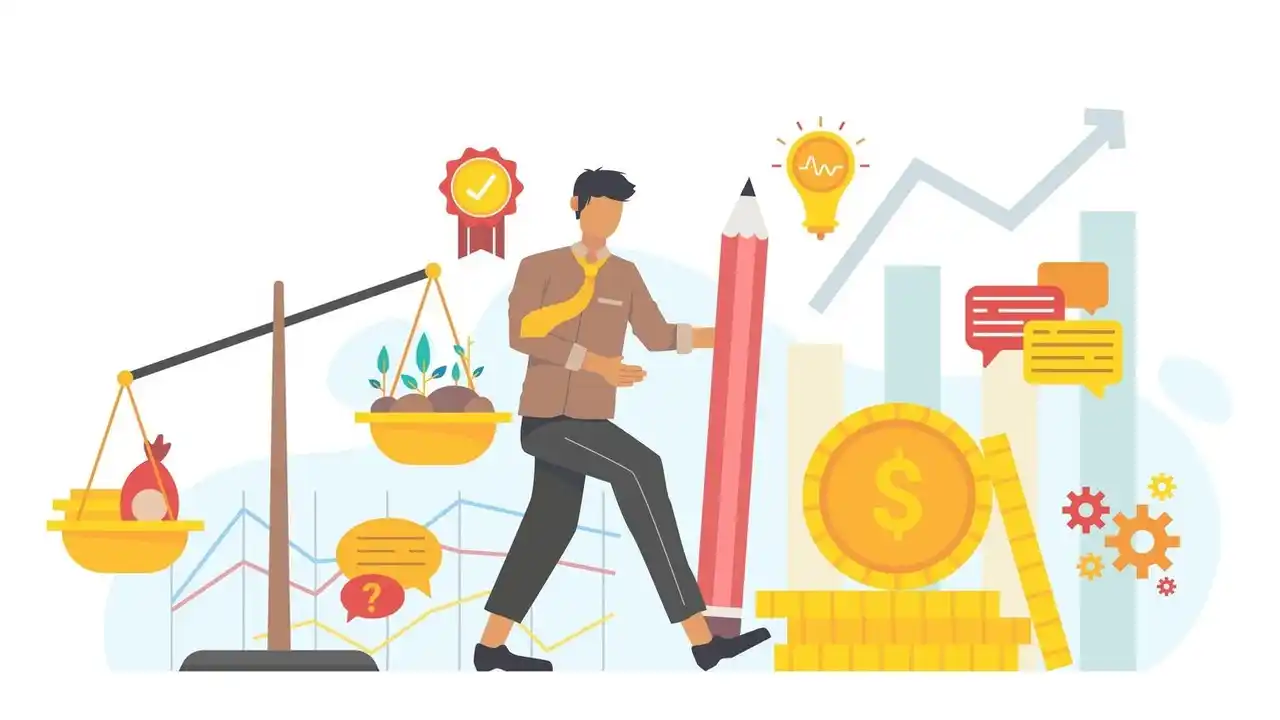Monetary policy refers to the methods used by a central bank to manage a country’s money supply, boost economic growth, and implement policies such as interest rate changes and changes to the minimum required in bank reserves. A monetary regime is another term for monetary policy. The Federal Reserve Bank of the United States enforces monetary policy and has the dual duty of maximizing employment and maintaining price stability. This article will cover types of monetary policy in-depth, providing various examples for your convenience.
A central bank defines monetary policy through statements and actions, regulating the movement of money in the banking system and the broader economy. Furthermore, monetary policy is set by a central bank. Credit, which includes mortgages, lending, and bonds, is an important component of monetary policy.
Types of Monetary Policy
Monetary policy is concerned with the control and regulation of an economy’s money supply and rate of expansion. Governments can use it to control major economic issues such as unemployment and inflation. They employ tools like changes in the money supply, adjustments in interest rates, and the acquisition or divestment of government assets to achieve these objectives and exert influence on the economy as a whole. The central bank or an analogous regulatory organization is in charge of developing such policies. The following are the types of monetary policy:
Modify Needed Reserves
The central bank typically establishes the minimum reserve requirement for commercial banks. Changing the necessary quantity could have a visible impact on the economy’s cash flow. The central bank’s move to raise reserve requirements for commercial banks may result in a decline in the availability of cash for loans provided by the latter. As a result, the amount of money in circulation drops.
Typically, commercial banks are required to meet the central bank’s minimum reserve requirement. The central bank’s power to control the money supply in the economy is exactly proportionate to its ability to change the requisite quantity. A rise in the mandated reserve amount by monetary authorities reduces the money supply as a whole, reducing the cash available for lending by commercial banks to their consumers. Commercial banks are unable to use their reserves to finance existing firms or to launch new operations. Commercial banks lose money by keeping reserves; consequently, central banks provide commercial banks interest in exchange for their reserves.
Rates of Exchange for Currency
Central banks are in charge of regulating the relative prices of their domestic and foreign currencies. If the central bank distributes an unusually large amount of currency, for example, cash in circulation may rise. If the foregoing occurs, the local currency is expected to depreciate.
Trading on the Open Market
The Federal Reserve can impact the money supply by purchasing and selling government-issued assets. The Federal Reserve can impact the money supply by buying and selling government bonds and other securities. For example, a country’s central bank may purchase government-issued bonds. This will boost banks’ access to funds, increasing their lending capability and the overall money supply of the economy.
Unemployment
The nation’s monetary policies play a role in calculating the unemployment rate. Adopting an expansionary monetary policy can lower the unemployment rate by stimulating business expansions, which increases the number of available jobs.
Contractionary
Implementing a contractionary strategy has two key goals: to reduce inflation and economic growth. Inflation is referred to when the cost of living grows in proportion to the value of the currency. An increase in interest rates and restrictions on the amount of money in circulation characterize a contractionary monetary policy. Central banks use contractionary monetary policies to control situations like inflation by reducing the amount of money freely available in the economy. As a result, the Federal Reserve occasionally cuts its holdings of short-term government securities, boosts interest rates, and requires financial institutions to maintain larger reserves.
Contractional monetary policy seeks to reduce the amount of money in circulation in the economy. Alternatives include increasing the minimum amount of reserve capital required of banks, selling government bonds, and boosting interest rates. The government uses a contractionary policy to keep inflation under control.
Expansionary
During economic downturns or recessions, implementing an expansionary policy may help to boost growth. Reduced interest rates encourage customers to engage in purchasing and borrowing activities by making conserving money less appealing. As the economy slows, the central bank wants to implement a series of expansionary policies. Such actions include lowering bank reserve requirements, purchasing short-term government assets, and lowering interest rates.
The central bank aims to boost the availability of new cash in the economy by executing policies such as interest rate cuts, central bank purchases of government assets, and lowering bank reserve requirements. Aside from lowering unemployment, an expansionary policy would increase consumer and business spending. The primary goal of an expansionary monetary policy is to boost overall economic growth. On the other hand, it may cause widespread price inflation.
Variation in Interest Rates
The central bank can impact interest rates by manipulating discount rates. The discount rate is the interest rate charged by a central bank on short-term lending. For example, if the Federal Reserve decides to raise interest rates, the cost of acquiring loans will rise in lockstep.
The discount rate is used by central banks to exert control over interest rates. Loans made by a central bank to commercial banks for three months or less are subject to an annual percentage rate known as the discount rate, sometimes known as the base rate. If the central bank raises the discount rate, the cost of borrowing money for banks will rise. As a result, financial institutions will raise the interest rates they charge their customers. The cost of borrowing money within the economy rises when resources become scarce.
Inflation
Monetary policies have a high impact on price levels and inflation. The economy often considers low inflation to be better. In the event of excessive inflation, authorities could apply a contractionary policy. Moreover, monetary policy can be used to influence inflation rates. Maintaining a moderate level of inflation is thought to be beneficial to the economy. A central bank’s primary goal is to achieve and maintain price stability.
Monetary Policy of Contraction
This technique will result in a decline in the economy’s money supply. In order to achieve this goal, the government may increase bank reserve requirements, hike interest rates, or sell government bonds. When the government judges that inflation must be controlled, this technique will be used. Moreover, central banks implement various types of monetary policy, such as adjusting interest rates or employing quantitative easing, to influence economic conditions.
Monetary Policy Expansion
The goal of this policy is to increase the money supply in circulation by purchasing government assets, lowering interest rates, and lowering the minimum reserve capital required of banks. It encourages entrepreneurial initiatives and helps to reduce unemployment. In its entirety, the expansionary policy tries to achieve economic expansion. So, this may result in an increase in inflation on occasion.
FAQ
Whose Job is it to Make Decisions about the Currency?
The New York Federal Reserve is critical to the implementation of the Federal Reserve’s monetary policy. So, the Federal Reserve is responsible, as ordered by Congress, for ensuring full employment, price stability, and moderate long-term interest rate growth.
To what End is Money so Crucial?
Monetary policy affects interest rates on savings accounts, mortgages, and business loans. Mortgage rates, small business loans, and savings account rates are all included. Interest rate variations have an impact on economic growth, employment, and inflation by influencing people’s investment and spending decisions.
Why is Money so Crucial, Exactly?
The primary responsibility of monetary policy is to aid in the maintenance of price stability, or the nominal level. When economic conditions improve and the prices of goods and services become more reliable indicators of supply and demand, nominal stability follows.
Summary
Monetary policy refers to the actions taken by a country’s central bank to boost economic growth, keep unemployment low, and limit volatility in currency values and inflation rates. Central banks use various instruments and policies to manage liquidity levels in financial institutions, thereby adjusting the money supply. Summing up, this topic related to types of monetary policy is crucial for the success of any organization. To broaden your understanding of functions of monetary policy, read beyond the surface level.





